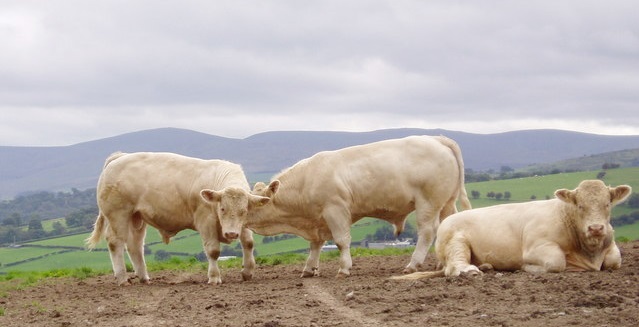
The risk of clinical disease and production losses in cattle and sheep from fluke and parasitic worms will remain high in many areas over the winter period, according to the NADIS Parasite Forecast for November.
A particularly high risk of liver fluke disease continues to threaten livestock in Western areas of Scotland and North Western England, while late emergence of worm larvae from dung pats poses a danger to stock at pasture, as they are exposed to infective stages of these parasites later in the season than is usual.
Sioned Timothy, veterinary adviser for Merial Animal Health, sponsors of the NADIS Parasite Forecast, says: “In areas at high risk of acute fluke, where sheep have already received a dose of triclabendazole, a second or possibly even third dose may be required. Outside these high risk areas, consideration should be given to using alternative flukicides such as closantel or nitroxynil (Trodax®) as a second dose in November or December, to reduce the selection pressure on triclabendazole.”
The dry weather throughout September and October may have prevented worm larvae from leaving dung pats or migrating to grass. As a result, flushes of the infective stages of various worm species may have been picked up later in the grazing season.
Parasitic gastroenteritis (PGE) in store lambs and occasionally in gimmers, caused by heavy infestations of Trichostrongylus, can result in rapid weight loss and black foetid diarrhea throughout the autumn and winter period.
On farms where Haemonchus is present, any larvae present will inhibit in the gut wall as temperatures drop. Inhibited larvae will not produce eggs, so faecal egg counts are not a reliable indicator of the presence of the worm. If flocks have a history of Haemonchus, a treatment will be required, ensuring that it also treats the inhibited stages.
With the increasing risk of wormer resistance in sheep, appropriate products should be selected and treatments targeted based on risk assessment to ensure that they are administered to the right animals.
“Any worm treatments given pre-tupping should be targeted at leaner ewes, gimmers and any sheep with dags,” advises Ms Timothy. “Any individuals with a body condition score 1.5-2 units less than the flock average should be assessed by a vet.”
Rams have often not received any parasite control during the summer months. Faecal egg counts should provide the basis for treatment pre-tupping.
To prolong the efficacy of the commonly used wormers in Groups one to three, Ms Timothy suggests that farmers consult their vet about the use of wormers in Group four (monepantel) and Group five (derquantel and abamectin) this autumn. Where triple-resistance is present (to all wormers in groups one to three), the judicious use of these new sheep wormers may be essential to achieve appropriate parasite control.
Treating with a wormer from group four or five could also be considered if fattening lambs are being moved to catch crops over the winter period, which will be ploughed for crops in 2016. In this case the refugia concept, where a population of susceptible worms is allowed to survive on pasture or in untreated sheep, to dilute any populations of resistant worms, isn’t relevant.
Cattle which have been exposed to liver fluke on pasture should be treated at, or soon after, housing. In many circumstances, two treatments, several weeks apart over the housing period (depending on the product used) containing clorsulon (Ivomec Super®) closantel or nitroxynil (Trodax®) will ensure cattle are turned out in the spring fluke free, and animals can benefit from the production uplift from improved feed conversion and weight gain.
In the battle to slow the development of resistance to triclabendazole, it’s vital to ensure the product is only used in situations where it is specifically indicated, such as treating acute fluke in sheep. This is especially important where sheep and cattle graze the same pasture.
The extended dry weather in October across much of the country means that late outbreaks of lungworm are a possibility, where infective larvae are released onto pasture after heavy rain. Other worm species, including Ostertagia (gutworm) may also have been picked up later in the season.
Any first and second-season grazing cattle housed over winter should receive a wormer at housing to prevent PGE and potential type two Ostertagiasis from inhibited larvae in the early spring.
“Autumn and winter period can be a critical time for parasite control, especially where fattening stock are concerned,” says Ms. Timothy. “Here, it’s really important that not only the right product for the parasite is chosen, but that meat withdrawal times are strictly adhered to. In some cases this may influence the choice available. A vet or SQP (Suitably Qualified Person) can advise on the most appropriate product for the circumstances.”
